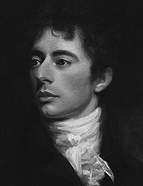

After his return from Portugal, he began writing about Iberian literature for British periodicals, reviewing translations, and commenting on travel accounts. In 1796, the Monthly Magazine published two short reviews by Southey, one on the poet Félix Lope de Vega (1562-1635) and another on the English translation of Camões by the Scottish poet William Julius Mickle (1735-88). In 1797, he published short reviews on the Spanish poets Esteban Manuel de Villegas (1589-1669) and Bartolomé Leonardo de Argensola (1562-1631). The following year, he reviewed the travelogue of the Irish architect James Cavanah Murphy (1760-1814), General View of Portugal , as well as an anonymous tragedy about Inês de Castro (A. Cabral., Southey e Portugal... [Southey and Portugal...], 1959, pp. 501-522).
In 1799, he planned to return to Portugal to address the health issues that troubled him—insomnia, lack of appetite, palpitations, and an inability to work. He also intended to use his stay to conceive an ambitious philosophical and scholarly history of the Portuguese nation on an imperial scale and to draw inspiration from the epic battlefields to reconstruct scenes for his poems ( Idem , p. 318; W. Speck, Robert Southey... , 2006, p. 81). Another motivating factor, which should not be overlooked, was his lack of interest in continuing the legal studies he had started in Bristol in 1797. If his first journey to the Iberian Peninsula was prompted by his uncle as a means of distancing him from the controversies surrounding his revolutionary zeal, his second stay in Portugal was motivated by his desire to establish himself as a man of letters (M. Z. Castanheira, “Speaking in Portuguese and Writing in English,” 2011, pp. 143-151).
This work is financed by national funds through FCT - Foundation for Science and Technology, I.P, in the scope of the projects UIDB/04311/2020 and UIDP/04311/2020.
